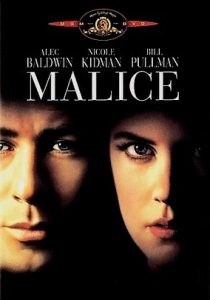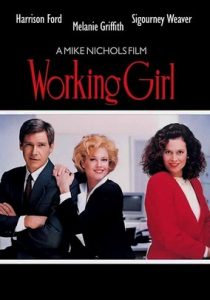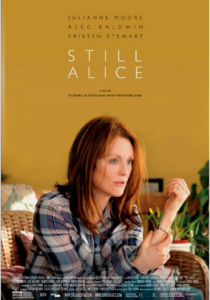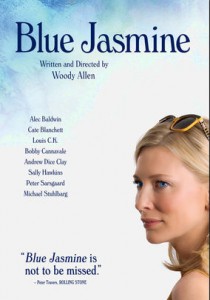A Star Is Born- 2018
Director Bradley Cooper
Starring Bradley Cooper, Lady Gaga
Top 250 Films #245
Scott’s Review #819
Reviewed October 10, 2018
Grade: A
On paper, by the time a film reaches its fourth remake (think- superhero franchises), there is a risk of either utter redundancy or a lack of interest (or both!).
Months before A Star Is Born (2018) was released to theaters, a tremendous buzz emerged, particularly about the stars (Bradley Cooper and Lady Gaga). Considering the latter had never starred in a film before, the word of mouth was surprising.
The hype can be believed as the film is a tremendous effort with something to offer everyone.
The story begins with a boozy country crooner, Jackson Maine (Bradley Cooper), performing a sold-out show. He needs pills to take the stage and suffers from gradual hearing loss, but he is nonetheless a famous and popular star.
Following the concert, Jackson meets Ally (Lady Gaga), a waitress who moonlights singing French songs at a drag bar. They immediately bond as he encourages her to celebrate her talent despite her insecurities.
As events unfold, the pair dive into a passionate romance as her career skyrockets while he deteriorates from drug and alcohol abuse.
On the surface, a film such as A Star Is Born risks being hokey, formulaic, or otherwise generic. The premise dictates this: a successful star meets an insecure up-and-comer, romance ensues, and they face obstacles and internal conflict on the road to success.
Sounds like material custom-made for a Hallmark television movie or something lightweight, especially given the remake of a remake factor.
Instead, every element of A Star Is Born works perfectly.
Of enormous praise is how Bradley Cooper both directs this film and has the central male role. As a director, he incorporates some interesting camera shots, including a long shot of Ally walking down an alley, rehearsing a song for a performance.
Also, the numerous concert scenes are very well done. Impressive since this is Cooper’s directorial debut.
An enormous win for the film is the chemistry between Cooper and Gaga, which is evident in the first moments when the two appear on screen together. Their chemistry is purely electric, almost magical as they rapidly bond and connect.
Their connection is not only physical but also based on their love of music and the artistry associated with creating good music. This bond is slowly tested as Ally’s career takes off and her manager steers her in a more pop-oriented direction, infuriating Jackson.
Even through turmoil, the chemistry between the two actors is palpable in every scene.
My two favorite scenes include the one in which Jackson and Ally first meet in the drag bar. The lovely French tune (Edith Piaf’s “La Vie en rose”) that she performs is cultural and rife with talent. As Jackson gazes at her from the bar, his gleaming eyes are filled with amazement and pride. He is immediately smitten with her talent and poise, and this scene sets the tone for the film.
The second comes at the film’s conclusion, as Ally belts the heartfelt “I’ll Never Love Again”. Performing to a subdued audience, the song is performed as a close-up of Ally to the tremendous visual effect.
The musical numbers are heartfelt and emotional without being sappy. From treasures such as “Shallow” and “Maybe It’s Time” to the thunderous “Black Eyes” and pop-driven “Why Did You Do That?”, the soundtrack contains something for everyone.
Cooper, already an acting champ, astounds as he is so good, while Lady Gaga, a novice to film acting, looks like a pro. We believe in her struggles, doubting her star potential as she is deemed “too ugly” to make it in the music business.
Gaga successfully showcases her pain, doubt, and eventual bombast at her sudden success.
Mention must be given to Sam Elliott, the veteran actor who gives a dynamic supporting turn as Bobby Maine, Jackson’s older brother and manager. Elliott does not have a showy role or a big emotional scene—he doesn’t need to. In the actor’s quiet way, he infuses the character with pent-up anger but also with unconditional love and affection for his brother.
Harboring rage and turmoil for each other, the best scene between Elliott and Cooper comes towards the film’s end when Jackson admits his love for Bobby. The emotion on Elliott’s face is raw in this important scene.
A Star Is Born (2018) is a superlative remake and one for the ages. This fan favorite will easily go down in the record books.
With a memorable musical soundtrack, outstanding acting and directing, and characters audiences can relate to, a classic in the making is not too difficult to imagine.
Oscar Nominations: 1 win-Best Picture, Best Actor-Bradley Cooper, Best Actress-Lady Gaga, Best Supporting Actor-Sam Elliott, Best Adapted Screenplay, Best Original Song-“Shallow” (won), Best Sound Mixing, Best Cinematography







